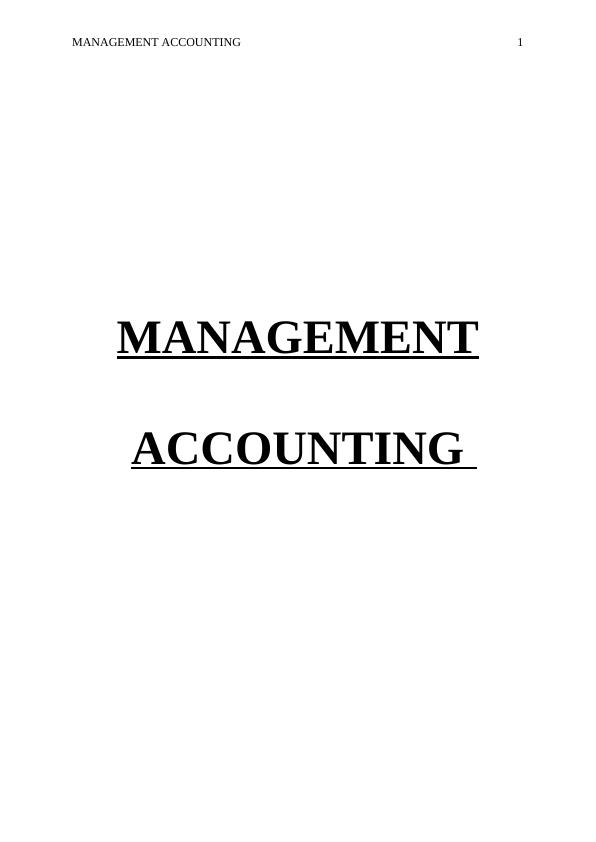Cost Accounting: Definition and Types With Examples

These standards are used only when they are likely to remain constant or unaltered over a long period. According to this standard, a base year is chosen for comparison purposes in the same way as statisticians use price in- dices. Since basic standards do not represent what should be attained in the present period, current standards should also be prepared if basic standards are used. Sometimes the employees and workers are discouraged when the standards are fixed at a high level. The unreal high standards may adverse by effect the morale of workers rather than working as an incentive for better efficiency. Standard Costing is a tool for the management to gain reduction in the cost and control over it.
Contents

To calculate the “Overhead Recovery Rate” add up all the indirect costs that BlackRock MuniHoldings NY Q Closed is incurrring for both the standard and custom product. This might involve looking into supplier price changes, production inefficiencies, labor shortages, or unexpected overhead expenses. Addressing these variances can lead to better budgeting, cost control, and decision-making.
Methodology Changes: Move Toward Activity-Based Costing (ABC)
With standard costing, the general ledger accounts for inventories and the cost of goods sold contain the standard costs of the inputs that should have been used to make the actual good output. Differences between the actual costs and the standard costs will appear as variances, which can be investigated. In short, while standard costs provide a valuable baseline, understanding actual costs is essential for managing resources, maintaining profitability, and driving business efficiency. Once historical data is collected, businesses must consider industry benchmarks.
Understanding Issued Shares: Types, Processes, and Financial Impact
Activity-based costing (ABC) identifies overhead costs from each department and assigns them to specific cost objects, such as goods or services. These activities are also considered to be cost drivers, and they are the measures used as the basis for allocating overhead costs. The costs that should have occurred for the actual good output are known as standard costs, which are likely integrated with a manufacturer’s budgets, profit plan, master budget, etc. The standard costs involve the product costs, namely, direct materials, direct labor, and manufacturing overhead. Traditional approaches limit themselves by defining cost behavior only in terms of production or sales volume. Activity-based costing (ABC) is an accounting approach that enables Nuveen NY Qlty Muni to assign overhead activities costs of the firm to the specific products and services it produces & delivers.
Under this technique, differences are analyzed and responsibilities are determined. Budget planning is undertaken by the management at different levels at periodic intervals to maximise profit through different product mixes. Another objective of standard cost is to make the entire organisation cost conscious. It makes the employees to recognise the importance of efficient operations so that costs can be reduced by joint efforts.
Cost Accounting: Definition and Types With Examples
Cost accounting is one method a company can use to estimate how well the business is running. Cost accounting looks to assess the different costs of a business and how they impact operations, costs, efficiency, and profits. Individually assessing a company’s understanding your tax forms cost structure allows management to improve the way it runs its business and, therefore, improve the value of the firm. Since it is not GAAP-compliant, cost accounting cannot be used for a company’s audited financial statements released to the public.
Manufacturing companies use cost accounting for estimating various expenses including direct material, direct labor, or overhead. The use of standard costing also enhances the transparency of financial statements. By comparing actual costs to standard costs, companies can clearly identify variances and their impact on profitability.
- Standards have to be revised and new standards be fixed involving larger costs.
- This method tended to slightly distort the resulting unit cost, but in mass-production industries that made one product line, and where the fixed costs were relatively low, the distortion was very minor.
- The use of standard costing also enhances the transparency of financial statements.
- The contractorneeds to keep appropriate government representatives informed of anycost and pricing data it generates.
- A manufacturer must disclose in its financial statements the amount of finished goods, work-in-process, and raw materials.
This process begins by identifying variances, which are the deviations from the established standard costs. These variances can be favorable or unfavorable, depending on whether the actual costs are lower or higher than the standard costs. By pinpointing these discrepancies, companies can gain valuable insights into their operational efficiency and cost management practices. In addition to enhancing forecasting accuracy, standard costing also aids in performance evaluation.


Leave a Reply